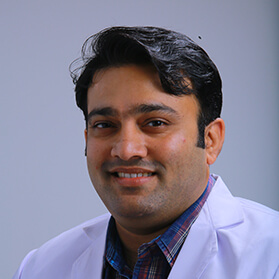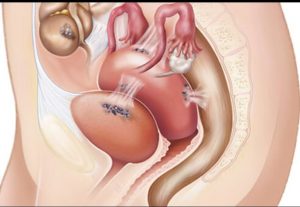Is Endometriosis a Cause for Infertility?
Endometriosis is a disorder in which the tissue that forms the lining of your uterus grows outside of your uterine cavity. The lining of your uterus is called the endometrium.
Endometriosis occurs when the endometrium grows on your ovaries, bowel, and tissues lining your pelvis. It’s unusual for endometrial tissue to spread beyond your pelvic region, but it’s not impossible. Endometrial tissue growing outside of your uterus is known as an endometrial implant.
The hormonal changes of your menstrual cycle affect the misplaced endometrial tissue. This means the tissue will grow, thicken, and break down. Over time, the tissue that has broken down has nowhere to go and becomes trapped in your pelvis.
This tissue trapped in your pelvis can cause:
- irritation
- scar formation
-
adhesions, in which tissue binds your pelvic organs together
- severe pain during your periods
- fertility problems
The tissue that is trapped tend to distort the anatomy of the pelvic organs and make it difficult for the sperms and eggs to fuse and become a pregnancy. This is one of the leading causes of Infertillity and in our group of population about 30-40% of the females do tend to have some form of endometriosis.
Symptoms
Pelvic pain is the most common symptom of endometriosis. Pain and Infertilty are the most common issues associated with endometriosis. Pain can be present in several ways depedning on the severity of the disease.
Other complications associated with endomtriosis like the rupture of the endmetriotic cyst, tortion or development of maligancy is extremely low.
How to diagnose ?
The symptoms of endometriosis can be similar to the symptoms of other conditions, such as ovarian cysts and pelvic inflammatory disease. Treating your pain requires an accurate diagnosis.
Detailed History and physical examination: Your doctor will note your symptoms and personal or family history of endometriosis. A general health assessment may also be performed to determine if there are any other signs of a long-term disorder. During a pelvic exam, your doctor will manually feel your abdomen for cysts or scars behind the uterus.
Ultrasound – Your doctor may use a transvaginal ultrasound or an abdominal ultrasound. In a transvaginal ultrasound, a transducer is inserted into your vagina. Both types of ultrasound provide images of your reproductive organs. They can help your doctor identify cysts associated with endometriosis (also called the choclate cysts), but they aren’t effective in ruling out the disease.

Laparoscopy – The only certain method for identifying endometriosis is by viewing it directly. This is done by a minor surgical procedure known as a laparoscopy. The disease can also be treated during the same procedure. Laproscopy for infertility is the best technique that will help us diagnose and also grade the severely of the disease.
Treatment
Like it was explained earlier the two issues we face with endometriosis are pain and infertility. The treatment strategy has to be planned accordingly and proceeded as both have different options.
If pain seems to be the main concern we have several options like over the counter pain killers NSAIDs, etc or hormonal tablets can be beneficial. Even oral contraceptive pills for a continuous duration are considered effective to reduce the pain as well as to put a hold to the progression of the disease. Hormonal Injection, androgens etc. which will completely stop your menstruation and will further reduce the symptoms, can be used in severe forms of the disease. As a last resort there are options to remove the endometriosis implants or cysts by surgery.
For Infertility, none of the medical treatments available can be used as the medications itself will prevent pregnancy. In early stage disease and young patients, it is always better to opt for laproscopy and try and correct the anatomy (position) of the pelvic organs to its actual position. As the chances per cycle are less, it is always better to have some associated treatment of using medication to produce more eggs or doing an IUI (Intra Uterine Insemination) better in certain cases to improve the pregnancy rates per cycle. If this doesn’t work, may want to consider fertility treatments or in vitro fertilization (IVF) to help improve your chances of having a baby.

About the Author
Dr. Parasuram Gopinath is the Senior Consultant & Scientific Director at CIMAR Fertility Center with branches in several parts of Kerala. Tamil Nadu & Dubai. After Dr Parasuram completed his post-graduation in Obstetrics and Gynecology, his work has been mainly focused on infertility and embryology. He had undergone further training in Advanced Reproductive Techniques like Oocyte Cryopreservation, IMSI, IVM etc. from several centers in Singapore, Germany & Canada. He has personally done over 3000 ICSI procedures and was instrumental in introducing the technique of IMSI in South India. He is an Invited speaker at Several National conferences on Infertility and do also have several publications to his credit.

Dr. Parasuram Gopinath, MBBS. MS(OBG)





